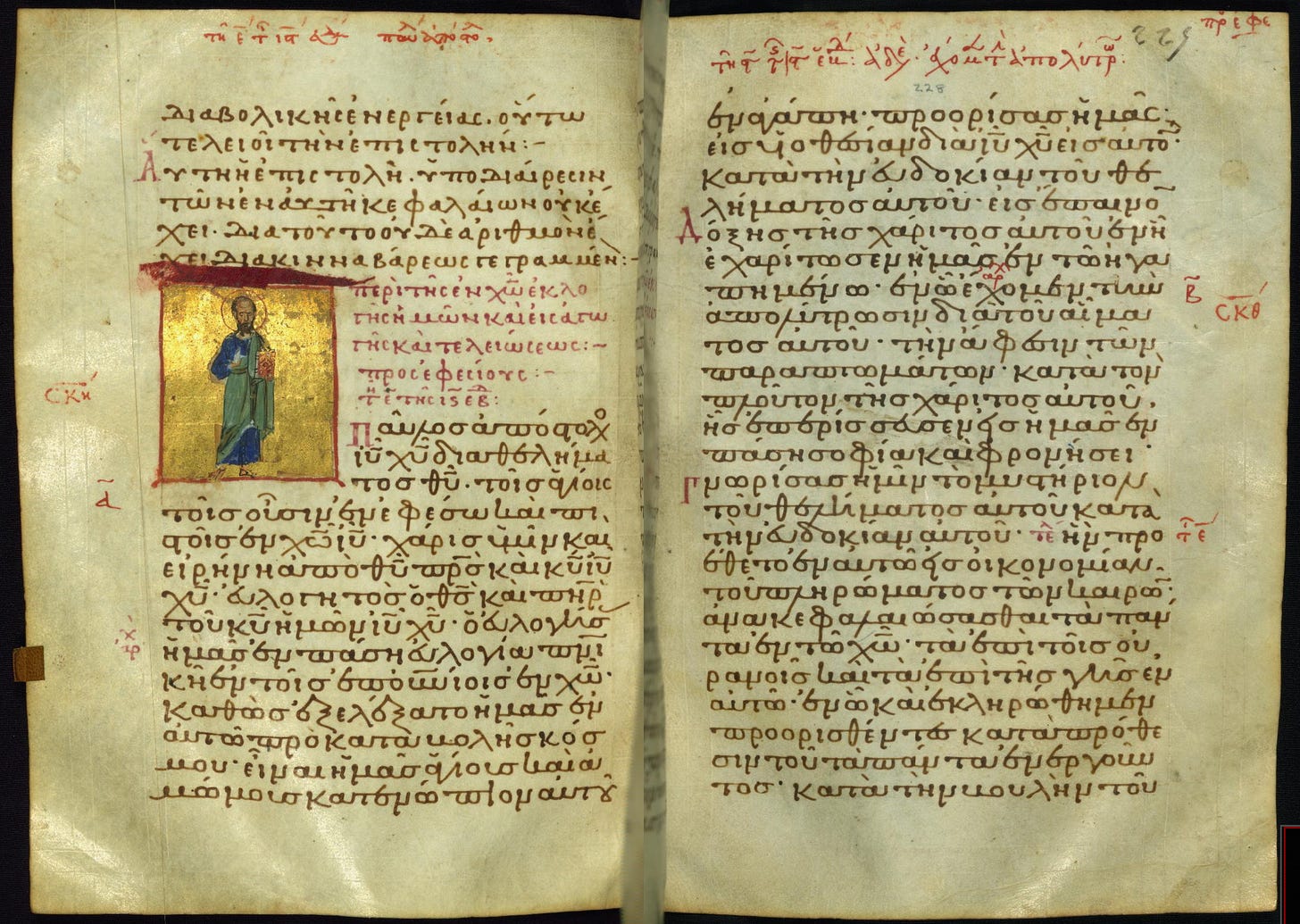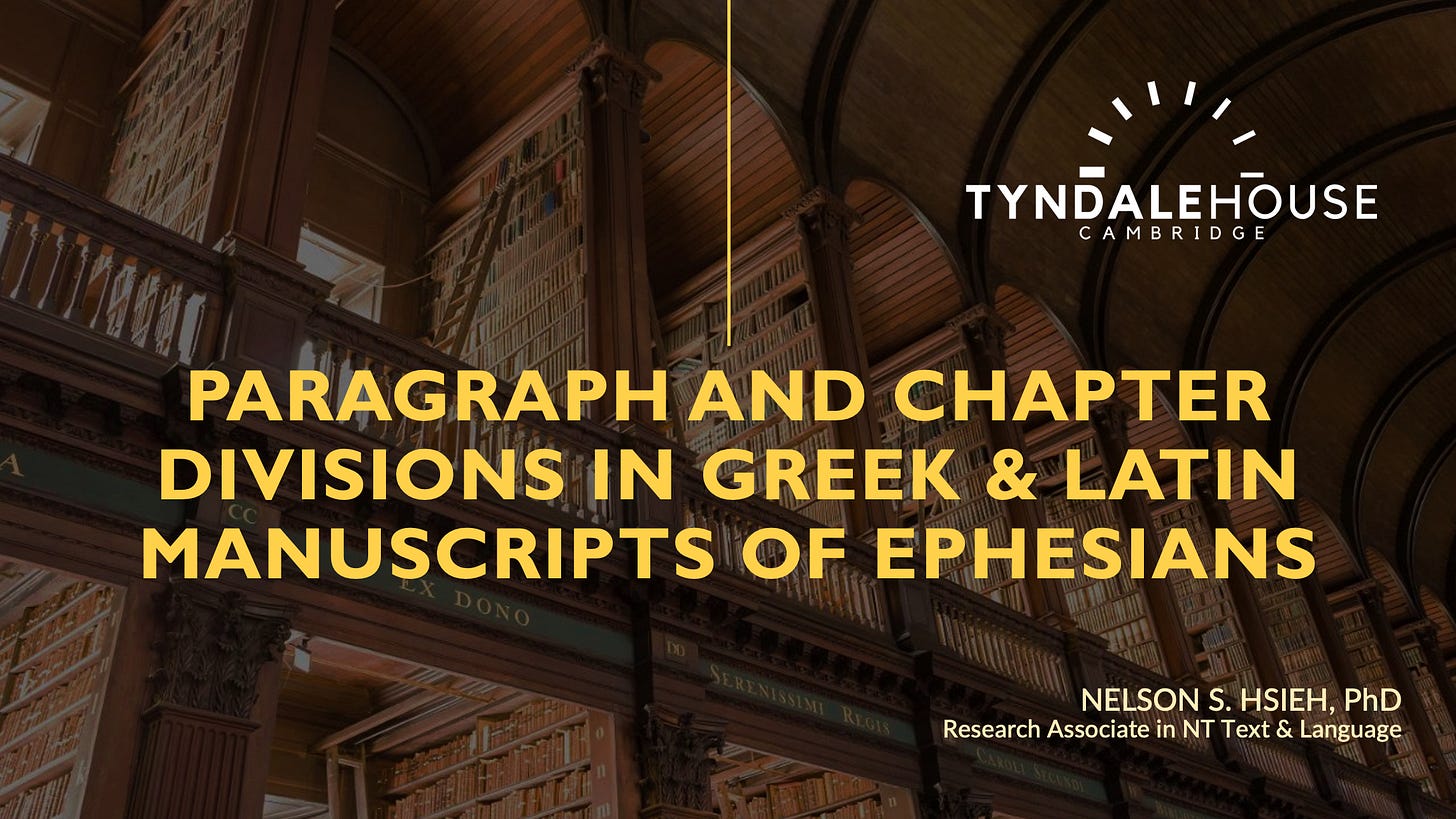The Structure of Ephesians According to the Earliest New Testament Manuscripts
Paragraphing and Chapter Divisions in Ancient Manuscripts of Ephesians
My recent research has been into the structure of Ephesians, based on studying the earliest Greek/Latin manuscripts. The paragraphing and chapter divisions in these manuscripts allow us to recover a partial picture into how Ephesians was structured in the fourth/fifth centuries.

The reception history of Ephesians is uncovered from these manuscripts, and it was an ancient and influential reception history.
In the past two months, I’ve given two talks to very different audiences and with varying material:
On 8 April at the Birmingham Colloquium of NTTC, I gave a talk for textual critics, so it’s more technical and more focused on the methodology of creating an apparatus. I didn’t have time to get into any exegetically significant examples. And there was only 2 minutes for Q&A. I critiqued ECM Revelation editor Martin Karrer in my paper, so it was nice to have in the room, hear his question/comment, and speak with him more afterwards.
On 4 June at Tyndale House Cambridge, I gave a talk for readers and staff aimed at a general level. I cut down the technical/methodological stuff and went more into exegetically significant examples from Ephesians 1-2 (and 5:22 in the Q&A). There was about 15 minutes for Q&A, so lots of questions.
The Birmingham Colloquium version is available on the IGNTP’s YouTube page:
And here are the Appendices and the PowerPoint from the Birmingham conference.
The version given at Tyndale House is available as an audio recording. You can also access the handout and the PowerPoint.
And I’ll be giving this talk a third time when Fred Sanders and students from the Torrey Honors College visit Tyndale House on 16 July. This will be adjusted even more for undergraduate students who have little to no experience working with manuscripts. I’ll have more pictures and focus on the exegetically significant examples; I probably won’t talk much (if at all) about the apparatus and methodology.




